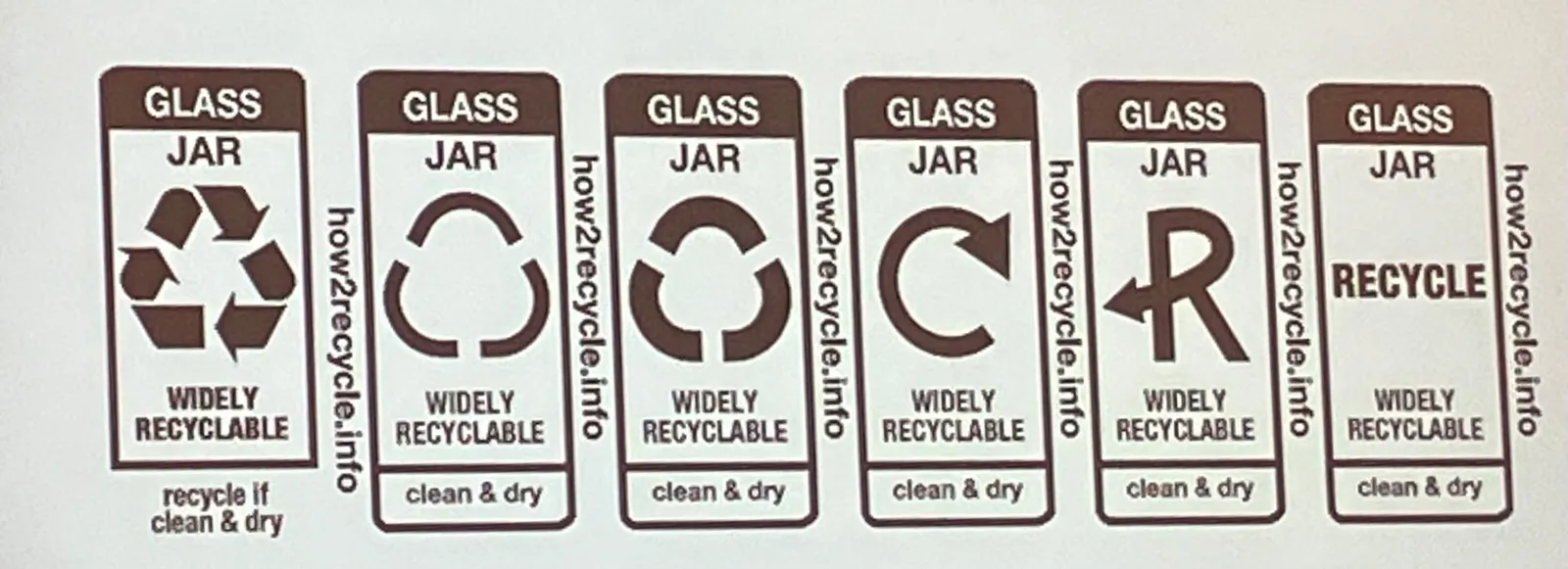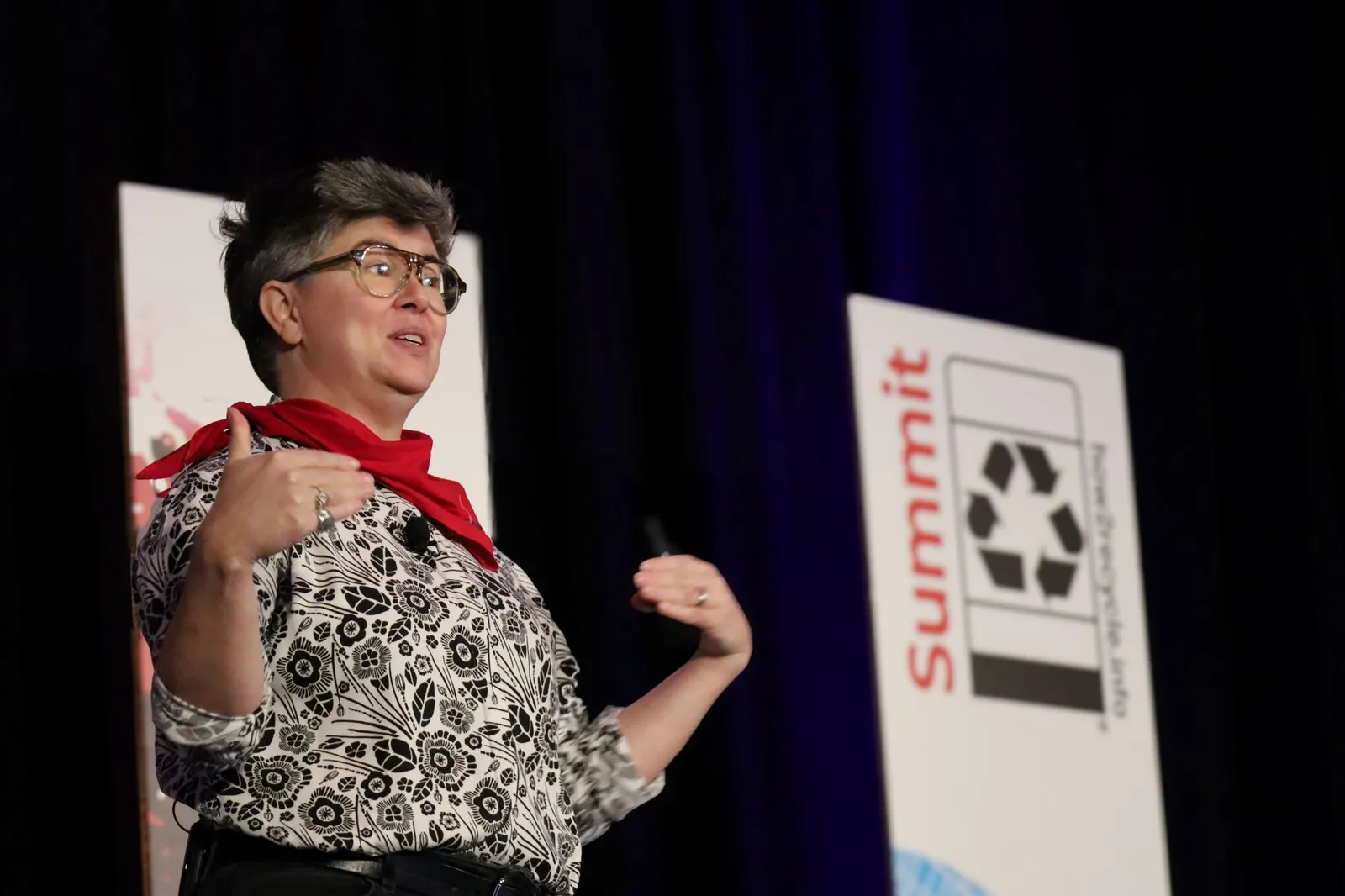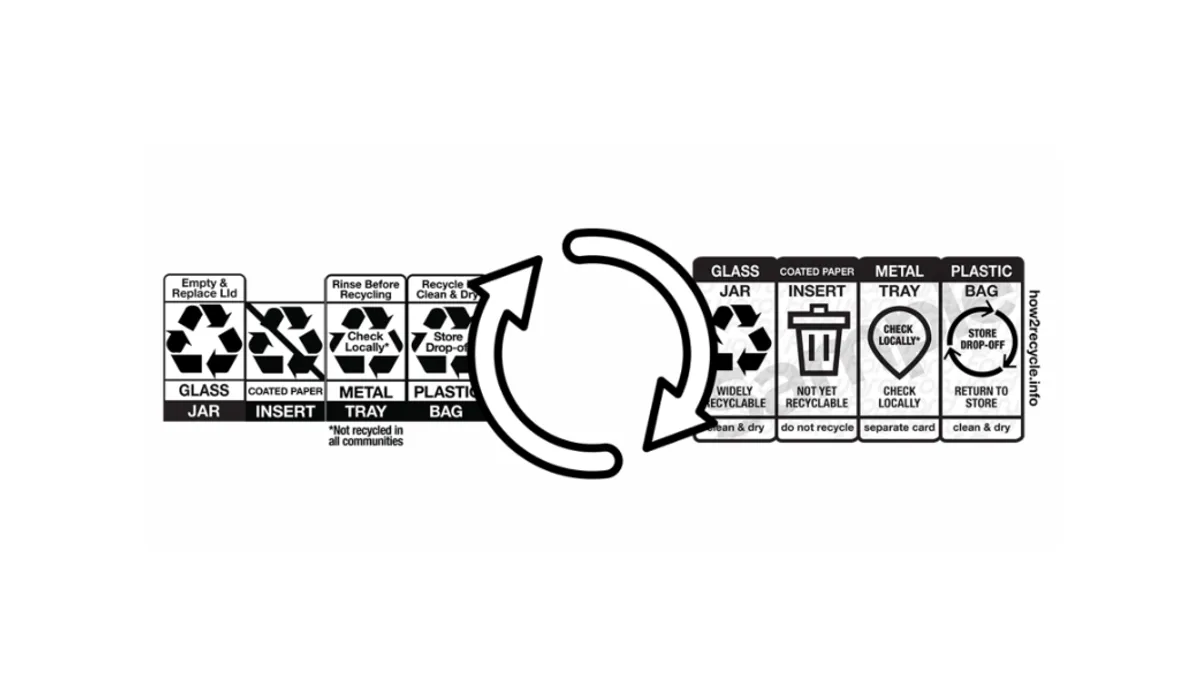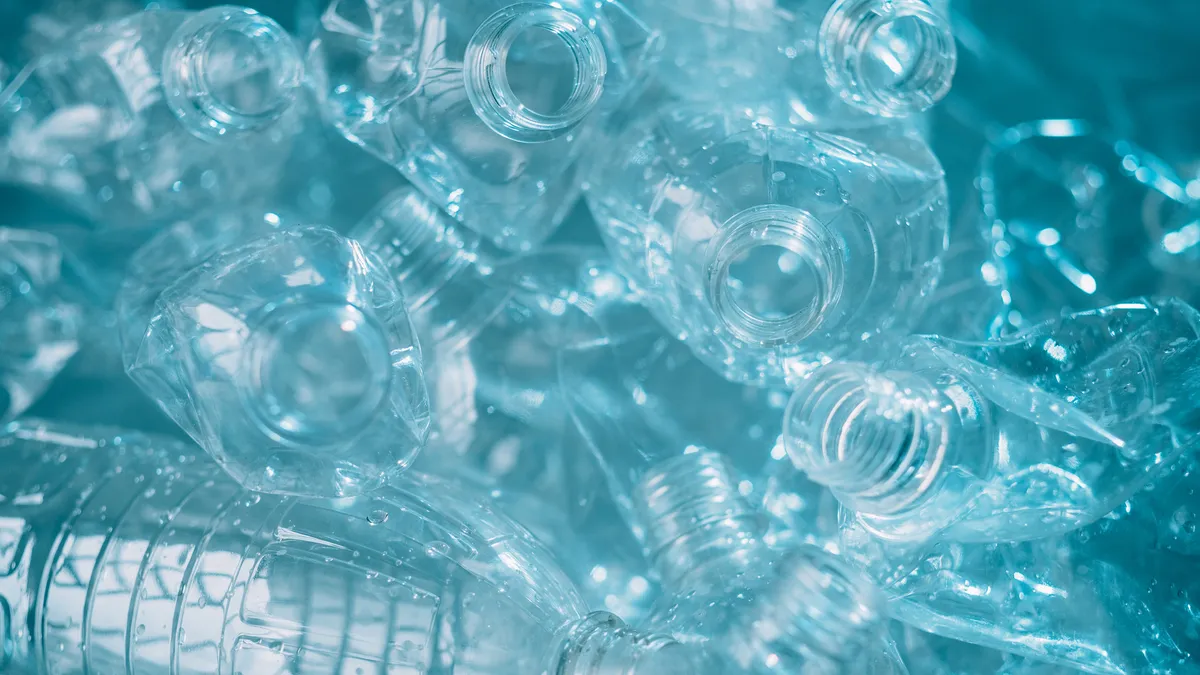The largely unrestrained use of the chasing arrows recycling symbol on products and packaging has come under fire in recent years. Critics say the icon often gives consumers false impressions about the likelihood an item will have new life in a way they expect, without nuance for local acceptance or end markets.
But in a notable redesign process to futureproof disposal labels amid evolving state legislation, How2Recycle — the instructional labeling program operated by environmental nonprofit GreenBlue and adopted by hundreds of brands in North America — isn’t ready to totally move on from the chasing arrows.
“The way we see the chasing arrows in How2Recycle is an icon that's part of a larger communication strategy. It's never floating by itself,” said GreenBlue Executive Director Paul Nowak, in a September interview ahead of the redesign reveal.
The existing version of the How2Recycle label leans heavily on the chasing arrows, using different variations of them across the program’s different recyclability statuses. But in a consumer’s split-second glance, sometimes the slash over the chasing arrows for the not yet recyclable label, for instance, can be hard to distinguish, noted Brandi Parker, who led the redesign and spoke about the process at the How2Recycle Summit in Chicago on Oct. 3.
Many design projects are simplified by homing in on a particular audience. Not this one.
“The demographic is everyone,” said Parker, who is also a program lead for the Sustainable Packaging Coalition’s design collaborative and serves as a brand-level sustainability consultant through Parker Brands. The goal was to preserve what it said was working while evolving the concept and taking complexity into account.
Parker and team tested comprehension among general consumers and SPC members this past year, which informed the proposed redesign. The redesigned label would involve different icons for each category — widely recyclable, check locally, store drop-off and not yet recyclable — and would also add on-pack language naming that recyclability status, instead of just showing some version of chasing arrows with instructions.
Through the process, How2Recycle showed over 1,000 respondents in each round different label shapes, formats, verbiage, symbols and more. Parker said that the preferred visual cue to indicate a consumer should recycle an item ended up being strikingly similar between consumers and professionals. The chasing arrows were “number one by a mile,” Parker said. A distant second was an icon that simply said “RECYCLE.”

“Any time we can keep the word ‘recycle,’ people respond positively,” Parker said.
The traditional chasing arrows would only be used on items deemed by How2Recycle to be widely recyclable, or those accepted by at least 60% of U.S. recycling facilities. This aligns with the threshold set by the Federal Trade Commission’s Green Guides, or guidance for environmental marketing, which were last updated in 2012 but are currently under review again. Lawmakers have also explored federal truth in labeling standards.
How2Recycle is also proposing that a narrow, more circle-shaped chasing arrows icon, paired with store drop-off language, be used to indicate when an item must be returned a to store for recycling.
California, the largest state economy in the U.S., passed its own truth in labeling law in 2021. SB 343 spurred eligibility criteria for labeling an item as recyclable in the state. Anyone wanting to use the chasing arrows symbol, which has been used around resin identification codes and on a variety of packaging, would need to determine if the packaging meets the eligibility criteria based on CalRecycle-published data.
The regulation is still a work in progress as the state gathers information; CalRecycle released a preliminary findings report in December on the required characterization study of material types and forms that routinely become feedstock for new products and packaging. Under SB 343, CalRecycle is now aiming for new prohibitions against mislabeling of products in 2026, according to the agency.

California’s chasing arrow restrictions loomed over the How2Recycle redesign.
So the team built two versions. One is based on data showing it would be better to leave the arrows as part of the communication strategy, Nowak explained. If regulators don't agree, “we're going to take the arrows out … and we have a different version that will then still comply,” he said. “But I don't believe removing an instruction was ever what California intended when they put these laws into place.”
How2Recycle has shared the proposed label update with U.S. and Canadian regulators, as well as those in California and other states, for feedback. The same updated design would be used for both How2Recycle Pro and How2Recycle Plus, the latter of which is a new premium offering that will also include an on-pack QR code that leads to localized recycling information.
Asked for comment on the review or how SB 343’s restrictions might apply to the How2Recycle label, CalRecycle spokesperson Lance Klug noted in an emailed statement that “Increasing recycling in California first requires accurate labels on recyclables” and SB 343 “will require products sold in California to meet several criteria for labels to include the chasing arrows symbol or otherwise direct consumers to recycle the product.”
“CalRecycle does not review and approve labels but publishes data as directed by law to help manufacturers determine compliant labeling for their product(s),” Klug said. “Improper label claims may be challenged by affected parties, district attorneys, or the Attorney General under California law prohibiting deceptive environmental marketing.”
SPC Director Olga Kachook said at the How2Recycle Summit that one important outcome of the redesign process was “just the massive amount of data that we now have” that support these design decisions.
Parker said it’s important that the new label is supported by education and a constant presence on social media, echoing a sentiment from Nowak that on-pack recycling education has been asked to carry too much of the weight. “Packaging performs a function and talks to us in some way, but it's limited. We can't really push it too far,” such that it gets too busy for anyone to look at.
Interested in more packaging news? Sign up for Packaging Dive’s newsletter today.























